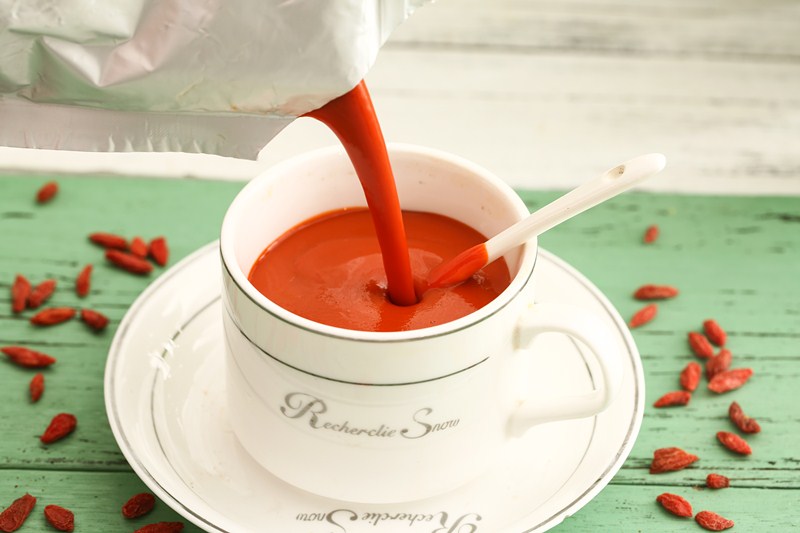The key points of the technology of cultivation
2. Seedlings and nursery nutritious soil seedlings. Nursery beds require a soil thickness of 10-15 cm. Drilling, spacing 4 to 5 cm. Sowing depth 1.5 to 2 cm. Seeding rate 10-15 g/m2. Germination period, keep the bed temperature 20 °C, 6 ~ 8 days emergence. After emergence, appropriate cooling to prevent seedlings grow. During the seedling stage, the temperature is maintained at 18 to 23°C during the day, 10 to 12°C at night, and the bed temperature is 15°C. At the seedling stage, attention should be paid to the control of damping-off of damping-off disease, as well as paralysis. When the seedlings develop 4 to 5 true leaves, they can be planted in the open field. Age 30 to 35 days.
If broadcast live, it will be conducted in a drill-down manner. Line spacing 20 to 25 cm, sowing depth of 2 to 3 cm. To keep the soil moist, 7-10 days out of Qimiao. During the two-leaf period, the planting spacing of the seedlings was 7-9 cm, the period from the three-leaf stage to the four-leaf stage, and the planting distance from the fixed-seedlings was 15-20 cm.
3. Before the land preparation, planting and planting, planting basal fertilizer in combination with site preparation. And then flatten it and do it. The width is 90-100 cm, 4 rows are planted, and the spacing is 15-20 cm. The planting period of Harbin is from late May to early June. Colonization should be done in the morning on a sunny day. 4. Fertilization Irrigation and soil preparation when applied quality decomposed organic fertilizer 2 ~ 3 kg / square meter, ammonium dihydrogen phosphate 25 ~ 30 grams / square meter, potassium sulfate 15 grams / square meter. The soil is sour, lime should also be used. After 10 to 15 days after colonization, topdressing (1:8 to 10) was applied once. In the early period of rosette, topdressing phosphorus and potassium compound fertilizer 1 times. In the mid-expanse of fleshy roots, phosphorus and potassium fertilizers were topdressed once more. The period of vegetative growth must satisfy the supply of moisture and do not lack water. However, in the later stages of the expansion of fleshy roots, the water supply should not be excessive; otherwise, it will be easily rooted. It is advisable to keep the soil moist.
5. 7 to 10 days after weeding and weeding, and one time of cultivating tillage. During the whole period of vegetative growth, we should often cultivating and weeding to prevent grass shortage. Top cultivating 3 times before mulching. After 2 times, 5 cm can be squatted. Loose soil is conducive to root development and the expansion of fleshy roots.
6. Harvesting When the diameter of the root of Chrysanthemum maxima reaches 3 cm, it is gradually harvested. The harvest can continue until it is frozen. When harvesting, dig deep enough. To prevent the meat root from being broken or injured. If you don't raise the fleshy roots out of the field, then the cows can safely winter in the open. If all the roots of the fleshy root are harvested and stored in the pit before freezing, they can be eaten throughout the winter and spring. The general output is 2 to 4 kg/m2.
Most of our products are made from our Organic Goji Berry Juice. That's why we are the only company can produce organic Goji Berry Juice Concentrate. We can control all the process lines from planting the goji berry fruit, picking up the fruit to producing the Goji Juice . Since 1997, we have changed our equipment for 4 times. We always keep the latest production ideas, strive to bring the most perfect products to our customers.
By comparing major nutrients of goji raw juice and Goji Juice Concentrate, we found that the nutrients of Goji juice concentrate are 3 times of Goji juice. The technique is scientific and quality stable and nutrients and active ingredients in particular do not lose. From the production and sales in the past two years, the shelf life can be as long as 18 months and products conform to clients` requirements. It is cost-saving for producing Goji powder or other uses. By adding 2 times of pure water and after high pressure and homogenization, it can be restored to the original state.

Appearance
1) Color: Red or deep red.
2) Taste & Odor: Fresh Goji Berry Juice concentrate taste and smell, no peculiar smell.
3) Histomorphology: Turbid liquid with pulp, allowing the pulp precipitation phenomenon after completely standing.
4) Impurity: No visible foreign impurities
Physics & Chemical Specification
1) Brix(%): ≥36.0
2) Total Acid(g/100mLas Citric Acid): ≥0.8
3) pH: 3.5-4.1
Microorganism Specification
1) TPC (CFU/mL): ≤100
2) Yeast (CFU/mL): ≤100
3) Mould (CFU/mL): ≤10
4) Coliform (CFU/mL): ≤10
Additive
NO
Country of Origin
ZHONGNING, NINGXIA, CHINA
Package
1) Inner package is 200kgs aseptic bag, outer package is opening steel drum.
2) Inner package is 25kgs aseptic bag, outer package is opening steel drum.
Storage
Should be stored at room temperature in clean, cool, dry warehouse, prevent sun, rain, and not be stored with corrosive, toxic, and smelly item. With these conditions, product shelf life is 18 months. (suggestion: 5-8℃).
Organic Goji Juice Concentrate (Brix 36%)
Organic Goji Juice Concentrate (Brix 36%),Organic Goji Berry Acai Juice,Top Grade Goji Berry Juice Concentrate,Organic Goji Berry Concentrated Juice
Ningxia Qixiang Biologic Foodstuff Co., Ltd. , https://www.qxgoji.com